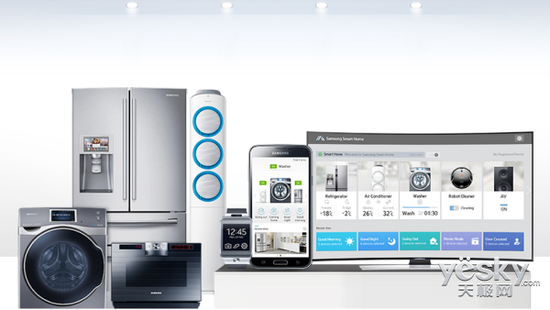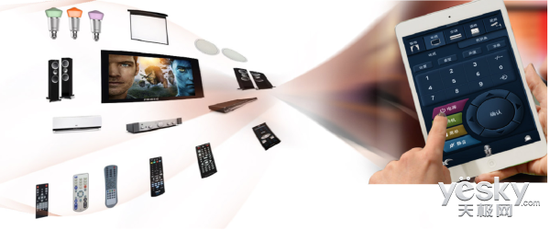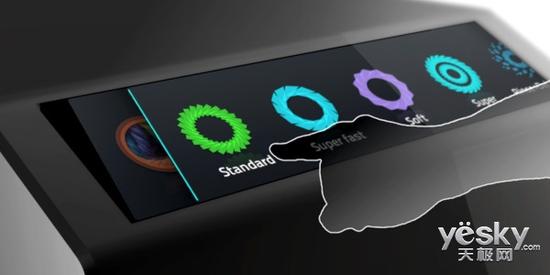
What is smart home?
The word "smart" should sound familiar. In fact, intelligence is mainly a process of thinking, judgment, learning, perception, and execution represented by human beings. With smart as an adjective to home, it means that home appliances will have the same features. Smart home is based on residential buildings. It integrates the cabling technology, network communications technology, security technology, automatic control technology, and audio and video technology to combine the equipment needed in our lives to construct a technology-efficient and efficient home management system.

Smart homes can integrate devices, home appliances, and security systems at home through the Internet of Things, and provide various functions such as remote control, real-time monitoring, and anti-theft devices. First of all, home automation is an important part of smart homes, and most of the content consists of home appliances (air conditioners, refrigerators, etc.) and home appliances. Although smart home appliances are the basis, if there is no line connecting them in a coordinated manner, they can only be independent, and the domestic Internet of Things can effectively make up for this. Through the Internet of Things, all equipment in the home will be well controlled and integrated, and different types of furniture can be organically combined.
Problems with smart homes
Smart Home has been called the next trillion market, and it attracted the attention of major manufacturers a few years ago.
After acquiring Nest, Google injects Dropcam, Revolo smart home company, etc., and released the Brillo IOT operating system. In response to the need for wireless network connectivity in the home, Google opened the home door with high-end router OnHub. The Homekit smart home platform, which was released by Apple in 2014, allows smart home appliances to be integrated and controlled by Apple devices. In 2016WWDC, Apple announced the four major system deployment ecological strategy, which further consolidated the status of Homekit. Future users can use this platform to control any smart device in the home.

Haier released Haier U+ Smart Life App in 2015 and announced the strategic release of Haier U+ Smart Life Platform 2.0 this year. Haier U+ smart living platform takes artificial intelligence as its technical foundation, and through a number of identification functions, it engages in conversations with users. It can also use the unique learning function of artificial intelligence and Haier big data as support to create a full-family home use.
Tencent's sample survey of 50,338 samples in 2014 showed that they are willing to spend 50-100 million yuan on smart homes, accounting for nearly 60% of the total number of people surveyed. Therefore, it can be seen that people are still advancing at the pace of pursuing a high quality of life, and the demand for smart homes is still there. But why do people still have a "frustrating attitude" towards smart homes? Perhaps the reason is in the following aspects.
First of all, at present, the intelligence of smart homes is not enough or there is a certain distance from what consumers think. When using smart homes, consumers often feel that they can leave or rely on a small part of the front-end operation, that is, they can complete the use of the product. However, the reality is that the current technology cannot support this point. At present, smart home appliances can only support remote control via Bluetooth or wireless network. However, smart home appliances such as smart robots, which are currently common, are easy to use, but they often have the problem of cleaning mistakes and being easily jammed by obstacles.
The price of smart homes has no advantage over similar products. Compared with the electrical appliances we usually use, the words "intelligence" seem to increase in value. Take the door lock in the home as an example. The price of an ordinary door lock using a key is about 100 yuan, and the smart door lock that can identify fingerprints and passwords will cost more than ten times. Although smart door locks are indeed easy to use, there is no need to worry about the advantages of having a key entry. However, from the perspective of consumers, it is not worthwhile to purchase non-essential goods at high prices.
Did not hit consumer pain points. Currently, there are a wide variety of smart home products on the market, such as smart lights, smart sockets, and smart remote controls. It has indeed brought about an improvement in the living standards of consumers, but its functions are often too monotonous to meet the growing needs of consumers.
On the other hand, from the perspective of practicality of smart home products, although the intelligent function of each product is good enough, it cannot be used on the same platform, and the home IoT is not fully formed. This creates an “island†between home appliances. All over, the sense of operation is reduced, which is especially serious in smart appliances. Only the connection between the user and the product is not sufficient. At present, smart home products cannot meet the needs of consumers in terms of “interconnectionâ€.
In addition, the security of smart homes has also become one of the challenges faced by manufacturers. Smart homes collect information when users use it, and can provide the best service according to the user's habits, preferences, and so on. Although the collection of data is necessary for smart homes, its hardware is vulnerable to hacking, leading to the flow of information. At present, only when voice control is turned off can the audio flow be avoided. For devices, firmware can only be updated continuously to ensure security.
There is no uniform standard for the smart home industry. Due to the ambiguity of relevant regulations in the industry, smart home appliances are different in the direction of development. Firms who are still in the process of exploration may take some detours without a clear direction.
Wisdom and intelligence may be only one word difference, but the significance of which requires a lot of technology to support. Although there is still a certain distance from the smart family, as people's living standards improve, the pace of pursuing a high quality of life will also greatly advance. Although smart homes are still in the early stages of development, with the continuous maturation of markets and technologies, smart homes will become the general trend of development.
The main function of the Solar Charge Controller is to manage the charging and discharging process between the Solar Panel and the battery in the solar power generation system. Its main function is to protect the battery from overcharge and over-discharge damage, ensure battery charging efficiency, and stabilize the operation of the solar power generation system.
Main effect:
Charge control: The solar charge controller controls the charging process by monitoring the voltage and current generated by the solar panel to ensure that the battery is charged at the appropriate voltage and current to extend the battery life.
Overcharge protection: The solar charge controller can monitor the charging status of the battery, and when the battery is fully charged, it will automatically stop charging to avoid battery damage caused by overcharging.
Over-discharge protection: The solar charge controller can monitor the discharge state of the battery. When the battery power is lower than a certain level, it will automatically stop discharging to avoid battery damage caused by over-discharge.
Differences from other charge controllers:
The solar charge controller is a charge controller specially designed for solar power generation systems, the main differences are as follows:
Applicable Energy: The solar charge controller is suitable for solar power generation systems, mainly used to manage the charging and discharging process between solar panels and batteries. While other charge controllers may be suitable for different energy generation systems, such as wind energy, hydro energy, etc.
Charging characteristics: The solar charge controller is optimized for the characteristics of the solar panel, and can control the charging process according to the output power and voltage characteristics of the solar panel. Other charge controllers may be optimized for different types of energy generation characteristics.
Protection function: Solar charge controllers usually have overcharge protection and over-discharge protection functions to ensure the safe charging and discharging of batteries. Other charge controllers may have different protection functions, depending on the needs of the application scenario.
Overall, the main role of the solar charge controller is to manage the charging and discharging process in the solar power generation system, protect the battery from damage, and stabilize the system's operation. Compared with other charge controllers, it is optimized for the characteristics of solar power generation systems and has unique functions such as overcharge protection and over-discharge protection to meet the needs of solar power generation systems.
eco worthy solar charge controller, solar panel controller types, solar charge controller and inverter, solar cell controller, solar panel battery charge controller
Ningbo Autrends International Trade Co., Ltd. , https://www.aitsolarpanels.com